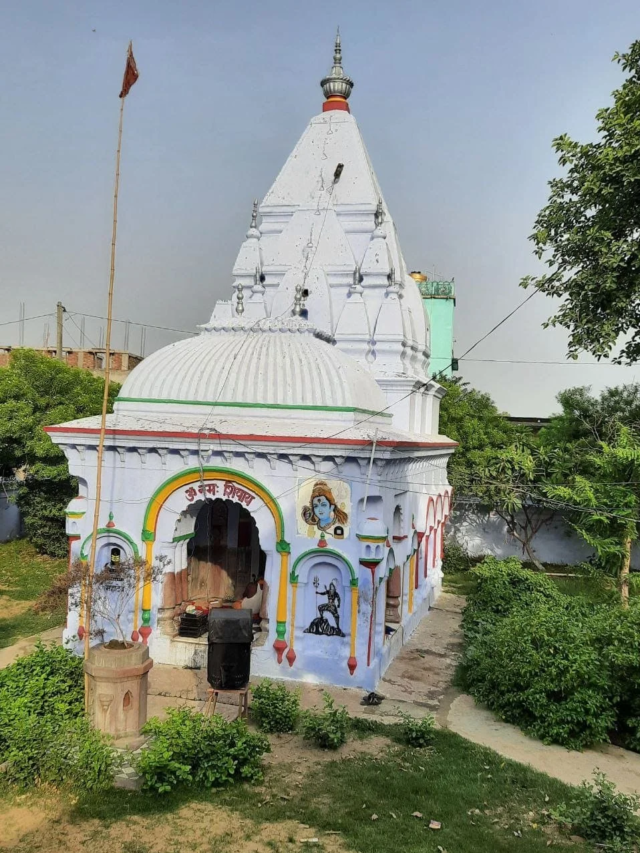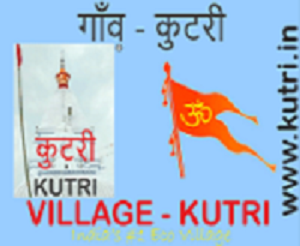Kutri Village Authority- Based on the search results, “Kutri Village Authority” refers to the Gram Panchayat of Kutri village, which is a local self-government body in India. Here’s a breakdown of key information:
- Location:
- Kutri village is located in the Warisaliganj Block of the Nawada district in Bihar, India.
- Governance:
- It is governed by a Gram Panchayat, which is a rural local body.
- This falls under the Panchayati Raj system in India, designed for village-level self-governance.
- Key Features:
- The Gram Panchayat of Kutri consists of multiple villages, including Kutri, Naromurar, Khirbhojna, and Rampur.
- It is divided into wards, and there are elected representatives.
- The Gram Panchayat handles various local administrative functions, including local development and services.
- Information shows that the Kutri Gram Panchayat has employees that work in different departments, such as health, rural development, and education.
- To find more information, the site kutri.in, and the site localbodydata.com, contain much information about the Kutri Village Authority.
In essence, the Kutri Village Authority is the local governing body responsible for the administration and development of Kutri village and its surrounding areas.
What is Required Kutri Village Authority
The Kutri Village Authority, like any Gram Panchayat in India, has a range of required responsibilities. These generally center around local governance and development. Here’s a breakdown of what’s typically required:
Core Responsibilities:
- Development Planning:
- Creating and implementing plans for economic development and social justice within the village. This includes identifying local needs and priorities.
- Infrastructure Management:
- Maintaining and developing local infrastructure, such as roads, drainage systems, and public spaces.
- Sanitation and Public Health:
- Ensuring proper sanitation, waste management, and access to clean drinking water.
- Implementing public health initiatives and awareness programs.
- Social Welfare:
- Overseeing the implementation of various government schemes related to social welfare, such as poverty alleviation programs.
- Addressing the needs of vulnerable populations.
- Local Resource Management:
- Managing local resources, including land and water resources.
- Record Keeping:
- Maintaining accurate records of births, deaths, and other vital statistics.
- Implementation of Government Schemes:
- Implementing state and central government programs at the village level.
- Community Development:
- Promoting community participation in local development activities.
Key Aspects:
- Panchayati Raj:
- These responsibilities are derived from the Panchayati Raj system, which aims to decentralize governance and empower local communities.
- Constitutional Mandate:
- The 73rd Amendment to the Indian Constitution outlines the powers and responsibilities of Panchayats.
In essence, the Kutri Village Authority is required to act as a local government, working to improve the lives of its residents through effective planning and implementation of development initiatives.
Who is Required Kutri Village Authority

When considering “Who is required” within the Kutri Village Authority, it’s essential to understand the structure of a Gram Panchayat in India. This involves:
- Elected Representatives:
- The core of the authority consists of elected members from the village. This includes:
- The Sarpanch (village head), who is the presiding officer.
- Ward members, who represent specific areas within the village.
- These individuals are directly elected by the villagers and are responsible for representing their interests.
- The core of the authority consists of elected members from the village. This includes:
- Village Residents:
- Ultimately, the authority is “required” by the village residents. The Gram Panchayat exists to serve the needs of the people living within its jurisdiction.
- Citizen participation is vital for the effective functioning of the authority.
- Government Officials:
- While the Gram Panchayat is a self-governing body, it works in coordination with various government officials and departments.
- These officials may provide support, guidance, and oversee the implementation of government schemes.
- Administrative Staff:
- Gram Panchayats often have administrative staff that assist with day-to-day operations, record-keeping, and the implementation of programs.
In summary, the Kutri Village Authority requires the participation and involvement of:
- Elected leaders.
- The villagers themselves.
- Supporting government personnel.
- Administrative workers.
This collaborative structure is designed to ensure that the village is governed effectively and that the needs of its residents are met.
When is Required Kutri Village Authority
The Kutri Village Authority, like any Gram Panchayat, is required to be active and functional on an ongoing basis. However, there are specific times and situations when its presence and actions are particularly crucial:
- Regular Administrative Duties:
- The authority is required to function daily for routine administrative tasks, such as:
- Maintaining records.
- Overseeing sanitation.
- Addressing citizen grievances.
- The authority is required to function daily for routine administrative tasks, such as:
- Development Planning and Implementation:
- Periods of planning for development projects require intense activity. This includes:
- Annual planning sessions.
- Budget preparation.
- Project implementation phases.
- Periods of planning for development projects require intense activity. This includes:
- During Crises and Emergencies:
- Natural disasters (floods, droughts), outbreaks of disease, or other emergencies necessitate immediate and decisive action from the Village Authority.
- Implementation of Government Schemes:
- When new government programs are launched, the authority is required to mobilize and ensure effective implementation at the village level.
- Elections and Meetings:
- Regular Gram Sabha meetings and Panchayat elections are times when the authority’s presence and activity are essential.
- Ongoing needs of the village:
- The Kutri Village Authority is required to be active at all times, to address the ongoing needs of the people they serve.
In essence, the Kutri Village Authority’s “required” presence is constant, with heightened activity during specific events and periods.
Where is Required Kutri Village Authority
Based on the search results, the Kutri Village Authority is required to be present and active within the geographical boundaries of:
- Kutri Village:
- This is the central location where the authority operates.
- Warisaliganj Block:
- Kutri village falls under the Warisaliganj Block of the Nawada district in Bihar, India. Therefore, the authority’s responsibilities extend within this block’s jurisdiction.
- Nawada District:
- The Kutri Village Authority is a part of the larger administrative structure of the Nawada district in Bihar, India.
- The Gram Panchayat area:
- It is important to understand that the Kutri Gram Panchayat, consists of the following villages: Kutri, Naromurar, Khirbhojna, and Rampur. Therefore the Kutri Village Authority has jurisdiction over all of those villages.
In essence, the “where” is within the defined area of the Kutri Gram Panchayat, located within the Warisaliganj Block of the Nawada district in Bihar, India.
How is Required Kutri Village Authority

Understanding “how” the Kutri Village Authority is required to function involves looking at the structure and processes of a Gram Panchayat within the Indian system. Here’s a breakdown:
Key Aspects of Functioning:
- Panchayati Raj System:
- The authority operates within the framework of the Panchayati Raj system, which is a decentralized form of governance. This system mandates that local governance be carried out by elected bodies.
- Gram Sabha Meetings:
- Regular Gram Sabha meetings are essential. These are meetings of all adult residents of the village, providing a platform for:
- Discussing local issues.
- Planning development projects.
- Providing feedback to the Gram Panchayat.
- Regular Gram Sabha meetings are essential. These are meetings of all adult residents of the village, providing a platform for:
- Elected Representation:
- The authority functions through elected representatives, including the Sarpanch and ward members. These individuals are responsible for:
- Representing the interests of their constituents.
- Making decisions on behalf of the village.
- The authority functions through elected representatives, including the Sarpanch and ward members. These individuals are responsible for:
- Administrative Processes:
- The authority carries out its duties through established administrative processes, which may include:
- Maintaining records.
- Managing budgets.
- Implementing government schemes.
- The authority carries out its duties through established administrative processes, which may include:
- Coordination with Government:
- The authority works in coordination with various levels of government (state and central) to:
- Access resources.
- Implement government programs.
- Receive guidance and support.
- The authority works in coordination with various levels of government (state and central) to:
- Community Participation:
- The Kutri Village Authority, to function correctly, must encourage community participation in all activities. This allows for the needs of the people to be properly addressed.
In essence:
- The “how” involves a combination of democratic processes, administrative procedures, and community engagement.
- It is vital that the Kutri Village Authority function in accordance with the laws and guidelines set forth by the Indian constitution, regarding the Panchayati Raj system.
Case Study on Kutri Village Authority
Unfortunately, finding a specific, detailed, and formally published “case study” solely on the Kutri Village Authority is difficult. However, we can construct a general case study framework based on the typical functions and challenges faced by Gram Panchayats in rural India, and apply that to the context of Kutri Village.
Here’s a potential case study framework, focusing on key areas:
Case Study Framework: Kutri Village Authority
1. Background:
- Location:
- Kutri Village, Warisaliganj Block, Nawada District, Bihar, India.
- Demographics:
- Information about the population, socio-economic status, and key demographics of the village.
- Governance Structure:
- Overview of the Kutri Gram Panchayat, including the Sarpanch, ward members, and administrative staff.
2. Key Challenges:
- Infrastructure:
- Road conditions, access to clean water, and sanitation facilities.
- Potential challenges in maintaining and improving these infrastructures.
- Social Development:
- Access to education and healthcare.
- Implementation of social welfare schemes.
- Addressing issues related to poverty and social inequality.
- Resource Management:
- Management of local resources, including land and water.
- Potential issues related to environmental sustainability.
- Community Engagement:
- Getting good participation in Gram Sabha meetings.
- ensuring that all demographics of the village have their voices heard.
3. Initiatives and Actions:
- Development Projects:
- Examples of specific projects undertaken by the Kutri Village Authority.
- This could include road construction, sanitation drives, or water supply improvements.
- Implementation of Government Schemes:
- How the authority has implemented schemes like MGNREGA (Mahatma Gandhi National Rural Employment Guarantee Act) or other relevant programs.
- Community Participation Efforts:
- Initiatives to increase community engagement in local governance.
4. Outcomes and Impact:
- Improvements in Infrastructure:
- Measurable improvements in road conditions, water supply, or sanitation.
- Social Development Indicators:
- Changes in education levels, healthcare access, or poverty rates.
- Community Well-being:
- Overall impact on the quality of life for residents of Kutri village.
5. Lessons Learned:
- Challenges and Obstacles:
- Identifying the key challenges faced by the Kutri Village Authority.
- Success Factors:
- Highlighting the factors that contributed to successful initiatives.
- Recommendations:
- Providing recommendations for future improvements.
Where to find supporting information:
- Government Websites:
- Websites of the Bihar state government and the Ministry of Panchayati Raj.
- Local Records:
- If access is possible, local government records held by the Kutri Gram Panchayat, or the Nawada district offices.
- NGO reports:
- Many NGO’s work within rural India, and produce reports that contain valuable information.
By using this framework, you can begin to assemble a case study of the Kutri Village Authority, even without a single, pre-existing document.
White paper on Kutri Village Authority
Creating a comprehensive “white paper” on the Kutri Village Authority would involve a detailed analysis of its operations, challenges, and potential solutions. Here’s a structured outline of what such a white paper could contain, drawing from general knowledge of Gram Panchayats in India:
White Paper Outline: Kutri Village Authority
1. Executive Summary:
- A concise overview of the Kutri Village Authority, its purpose, and key findings.
- Highlighting the main challenges and proposed solutions.
2. Introduction:
- Background on the Panchayati Raj system in India.
- Specific context of Kutri Village and its location within Nawada district, Bihar.
- Purpose and scope of the white paper.
3. Profile of Kutri Village:
- Demographic data: population, age distribution, socio-economic indicators.
- Geographical information: land use, natural resources.
- Infrastructure overview: roads, water supply, sanitation, electricity.
4. Governance and Administration:
- Structure of the Kutri Gram Panchayat: Sarpanch, ward members, administrative staff.
- Functions and responsibilities as per the Panchayati Raj Act.
- Overview of Gram Sabha meetings and citizen participation.
- Information on budgets, and how funds are alloted.
5. Key Challenges:
- Infrastructure Deficiencies:
- Road connectivity and maintenance.
- Access to clean drinking water.
- Sanitation and waste management.
- Socio-Economic Issues:
- Poverty and unemployment.
- Access to education and healthcare.
- Implementation of social welfare schemes.
- Resource Management:
- Land and water resource management.
- Environmental sustainability.
- Governance and Capacity:
- Challenges in effective planning and implementation.
- Capacity building of elected representatives and staff.
- Transparency and accountability.
6. Proposed Solutions and Recommendations:
- Infrastructure Development:
- Strategies for improving road connectivity and water supply.
- Implementation of sustainable sanitation practices.
- Socio-Economic Empowerment:
- Programs for skill development and employment generation.
- Strengthening healthcare and education services.
- Effective implementation of government schemes.
- Sustainable Resource Management:
- Conservation of water resources and promoting sustainable agriculture.
- Community-based natural resource management.
- Strengthening Governance:
- Capacity building and training for Gram Panchayat members.
- Enhancing transparency and accountability.
- Promoting citizen participation.
- Utilizing technology for improved governance.
7. Implementation and Monitoring:
- Action plan for implementing the proposed solutions.
- Mechanisms for monitoring progress and evaluating impact.
- Role of stakeholders: government agencies, NGOs, community members.
8. Conclusion:
- Summarizing the key findings and recommendations.
- Emphasizing the importance of strengthening the Kutri Village Authority for sustainable development.
Important Considerations:
- Data Collection: Gathering accurate and up-to-date data is crucial. This may involve surveys, interviews, and analysis of government records.
- Community Input: Engaging with the residents of Kutri village is essential to understand their needs and perspectives.
- Collaboration: Working with government agencies, NGOs, and other stakeholders is necessary for effective implementation.
By following this outline, you can develop a comprehensive white paper that provides valuable insights into the functioning of the Kutri Village Authority and offers practical recommendations for improvement.
Industrial Application of Kutri Village Authority

The “industrial application” of a Gram Panchayat like the Kutri Village Authority is a bit of a nuanced concept. It doesn’t directly run factories or engage in large-scale industrial production. Instead, its “industrial application” lies in its role in:
- Facilitating Local Economic Development:
- This includes creating an environment conducive to small-scale industries and businesses.
- For Example:
- Providing necessary infrastructure (roads, water, electricity) that support local businesses.
- Issuing necessary permits and licenses for small businesses.
- Promoting local crafts and products.
- Managing Resources for Industrial Use:
- If the village has natural resources (like minerals, forests, or water), the authority has a role in managing their sustainable use.
- This could involve:
- Regulating the extraction of resources.
- Ensuring that industries comply with environmental regulations.
- Working to mitigate negative environmental impacts from local industrial practices.
- Labour and Employment:
- Through programs like MGNREGA, the authority can provide employment opportunities, which can indirectly support local industries.
- Also, the authority can work to upskill the local work force, so they have the skills that local industry needs.
- Supporting Agricultural-Based Industries:
- In rural areas like Kutri, many industries are linked to agriculture (e.g., food processing, dairy, etc.).
- The authority can support these industries by:
- Improving agricultural infrastructure.
- Facilitating access to markets.
- Promoting value-added processing of agricultural products.
- Environmental Regulation:
- The Gram Panchayat is required to help regulate any local industry, to ensure that it is not causing undue damage to the environment.
Key Considerations:
- The focus is on small-scale, local industries that benefit the village community.
- Sustainability is crucial, ensuring that industrial activities do not harm the environment or deplete local resources.
- The authority acts as a facilitator and regulator, rather than a direct participant in industrial production.
Essentially, the Kutri Village Authority’s “industrial application” is about creating a supportive and sustainable environment for local economic activity.
References
- ^ Bealey, Frank (1999). The Blackwell Dictionary of Political Science: A User’s Guide to Its Terms. Wiley. pp. 22–23. ISBN 0-631-20694-9.[dead link]
- ^ Miller, David (26 June 2003). “Political authority”. Political Philosophy: A Very Short Introduction. Very Short Introductions. Oxford University Press. p. 20. ISBN 9780191577864. Retrieved 28 September 2024.
Political authority has two sides to it. On the one side, people generally recognize it as authority, in other words as having the right to command … On the other side, people who refuse to obey are compelled to do so by the threat of sanctions … And these two aspects are complementary.
- ^ Jump up to:a b The New Fontana Dictionary of Modern Thought Third Edition, Allan Bullock and Stephen Trombley, Eds. p. 115.
- ^ Covell, Charles (9 July 2009). “Rousseau, Kant and Hegel”. The Law of Nations in Political Thought: A Critical Survey from Vitoria to Hegel. Basingstoke: Palgrave Macmillan. ISBN 9780230244450. Retrieved 28 September 2024.
[According to Kant, the] juridicial order of civil society found its concrete institutional embodiment in the civil state, as through the legislative, executive and judicial authorities that comprised the basis of the state constitution and the system of state government. Of the three state authorities, the legislative authority was understood by Kant to be foundational in that it stood as the sovereign authority in the state …
- ^ The New Fontana Dictionary of Modern Thought, Third edition, Allan Bullock and Stephen Trombley, eds., pp. 677–678.
- ^ Widyono, Benny (Oct 2014). “United Nations Transitional Authority in Cambodia (UNTAC)”.
- ^ Krause, George A. (2010). Durant, Robert F. (ed.). “Legislative Delegation of Authority to Bureaucratic Agencies”. The Oxford Handbook of American Bureaucracy. New York: Oxford University Press. p. 524.
- ^ Glanville, Luke (2016). Bellamy, Alex J. (ed.). “Sovereignty”. The Oxford Handbook of the Responsibility to Protect. New York: Oxford University Press. p. 153.
- ^ Laitin, David (1998). “Toward a Political Science Discipline: Authority Patterns Revisited”. Comparative Political Studies. 31 (4): 423–443. doi:10.1177/0010414098031004002. S2CID 146736449.
- ^ Cristi, Renato (2005). Hegel on Freedom and Authority. Cardiff, Wales: University of Wales Press.
- ^ Anthony Giddens, Sociology. London: Polity Press, 1997:581
- ^ Max Weber in “Weber’s Rationalism and Modern Society: New Translations for the 21st Century”, translated and edited by Tony Waters and Dagmar Waters. pp. 137-138.
- ^ C. Naomi Osorio-Kupferblum: “Conceptualising ‘Authority’”. In: International Journal of Philosophical Studies. Vol. 23, No. 2, 13 March 2015, pp. 223–236, doi:10.1080/09672559.2015.1020828
- ^ Bloom, Howard (2010). The Genius of the Beast: a radical re-vision of capitalism. Amherst, New York: Prometheus Books. p. 186. ISBN 978-1-59102-754-6.
To validate an argument, we refer back to our ancestors – or to someone who, while still alive, has already garnered the sort of authority only ancestors normally have.
- ^ Max Weber in Weber’s Rationalism and Modern Society, translated and edited by Tony Waters and Dagmar Waters, Palgrave Books 2015, pp. 136 [ISBN missing]
- ^ TY – CHAP AU – Guzman, Sebastian PY – 2007/02/01 SP – 1 EP – 2 N2 – Rational legal authority is a concept developed by Max Weber (1864–1920) to explain the stability of domination in modern times, especially in bureaucracies and democracies. A ruler is or has rational-legal authority when she is perceived as legitimate by her subjects on the grounds that she has been given right to issue commands by formal rules or laws. This entry defines the concept in relation to Weber’s more general understanding of domination and other types of legitimate domination, explains the usefulness of the concept from a Weberian perspective, and presents some of the main criticisms of the concept. T1 – Rational Legal Authority DO – 10.1002/9781405165518.wbeosr026.pub2 ER –
- ^ Flemisch, F., Heesen, M., Hesse, T., Kelsch, J., Schieben, A., & Beller, J. (2011). Towards a Dynamic Balance between Humans and Automation: Authority, Ability, Responsibility and Control in Cooperative Control Situations. Cognition, Technology and Work. Advance online publication. doi:10.1007/s10111-011-0191-6
- ^ Ludeke, Steven; Johnson, Wendy; Bouchard, Thomas J. (2013-08-01). “”Obedience to traditional authority:” A heritable factor underlying authoritarianism, conservatism and religiousness”. Personality and Individual Differences. 55 (4): 375–380. doi:10.1016/j.paid.2013.03.018. ISSN 0191-8869.
- ^ Laupa, 1991.
- ^ Reinhard. Bendix. Max Weber: An Intellectual Portrait. Garden City, NY: Anchor Books, Doubleday & Company, Inc. 1960.
- ^ “Country Comparison”. Hofstede Insights. 21 Jun 2021. Retrieved 3 Nov 2021.
- ^ “The Declaration of Independence”. Archived from the original on 2009-08-02. Retrieved 2009-07-27.[full citation needed]
- ^ Jump up to:a b c Guelzo, Allen C. (2012). Lincoln Speeches. New York: Penguin Books.
- ^ Jump up to:a b Ferejohn, John (2004). “The Authority of Regulation and the Control of Regulators”. In Marie-Anne Frison-Roche (ed.). Droit et économie de la régulation. Cairn.info. pp. 35–37. ISBN 9782724686463. OCLC 7292576035. Archived from the original on October 3, 2020 – via archive.today/IA9DF archive.is.
- “authority”, in OneLook Dictionary Search.
- authority in Keywords for Today: A 21st Century Vocabulary, edited by The Keywords Project, Colin MacCabe, Holly Yanacek, 2018.
- William Dwight Whitney, Benjamin E[li] Smith, editors (1911), “authority”, in The Century Dictionary […], New York, N.Y.: The Century Co., →OCLC.
- “authority”, in Lexico, Dictionary.com; Oxford University Press, 2019–2022.
- “Nawada District Census Handbook Page No. 3 for Population and Page No. 76 for Village Code” (PDF).
- ^ Jump up to:a b “Postal Code (PIN) and STD Code”.
- ^ “Details of Blocks and Villages of Nawada District”.
- ^ “Panchayat and Village Details of Nawada” (PDF).
- ^ Frawley, William (May 2003). International Encyclopedia of Linguistics: 4-Volume Set By William Frawley. ISBN 9780195139778.
- ^ “Station: Patna Climatological Table 1981–2010” (PDF). Climatological Normals 1981–2010. India Meteorological Department. January 2015. pp. 601–602. Archived from the original (PDF) on 5 February 2020. Retrieved 2 March 2020.
- ^ “Extremes of Temperature & Rainfall for Indian Stations (Up to 2012)” (PDF). India Meteorological Department. December 2016. p. M36. Archived from the original (PDF) on 5 February 2020. Retrieved 2 March 2020.
- ^ “Table 3 Monthly mean duration of Sun Shine (hours) at different locations in India” (PDF). Daily Normals of Global & Diffuse Radiation (1971–2000). India Meteorological Department. December 2016. p. M-3. Archived from the original (PDF) on 5 February 2020. Retrieved 2 March 2020.
- ^ “Higher Secondary School List SL. No. 64”.
- “Uttar Pradesh Village List”. upbhulekh.gov.in.
- ^ “Kutrai, Jagat Village information | Soki.In”. soki.in.
- VanderMeer, Jeff (February 28, 2014). “Jeff VanderMeer’s Annihilation”. USA Today. Interviewed by Ian Spiegelman. Retrieved June 7, 2018.
- ^ Bosman, Julie (February 10, 2014). “Impatience has its reward as books are rolled out faster”. The New York Times. Retrieved June 7, 2018.
- ^ “Paperback Trade Fiction”. The New York Times. May 25, 2014. Retrieved 24 May 2014.
- ^ Bean, Matt (May 14, 2014). “Authority”. Entertainment Weekly. Retrieved March 19, 2018 – via ew.com.
- ^ Jemisin, N. K. (May 30, 2014). “Science Fiction: Jeff VanderMeer’s ‘Authority,’ and More”. The New York Times. Retrieved June 7, 2018.
- Forbes, Duncan (1861) A smaller Hindustani and English dictionary
- ^ Bahri, Hardev (2006) Advanced learner’s Hindi English Dictionary
- ^ Panjab University Research Bulletin: Arts, Volume 13, Issue 1 – Volume 14, Issue (1982) [1]
- ^ Winer, Lise (2009-01-16). Dictionary of the English/Creole of Trinidad & Tobago: On Historical Principles. McGill-Queen’s Press – MQUP. ISBN 978-0-7735-7607-0.
- ^ Punjab District Gazetteers: Rawalpindi District (v. 28A) (1909)
- ^ Kehal, Harkesh Singh (2011) Alop ho riha Punjabi virsa bhag dooja. Lokgeet Parkashan. ISBN 978-93-5017-532-3
- ^ Compiled and published under the authority of the Punjab government (1939)Punjab District and State Gazetteers: Part A.[2]
- ^ Walter Pullin Hares (1929) An English-Punjabi Dictionary
- ^ Flynn, Dorris (1071) Costumes of India
- ^ Vanessa Betts, Victoria McCulloch (2014) Indian Himalaya Footprint Handbook: Includes Corbett National Park, Darjeeling, Leh, Sikkim [3]
- ^ Sharma, Brijendra Nath (1972) Social and Cultural History of Northern India: C. 1000-1200 A.D [4]
- ^ Census of India, 1961: Rajasthan
- Jamila Brij Bhushan (1958), The Costumes and Textiles of India
- ^ Cine Blitz, Volume 29, Issue 1 (2003)
- ^ S.R. Bakshi and O.P. Ralha (2008), Madhya Pradesh Through the Ages
- ^ Kumar, Ritu (2006), Costumes and Textiles of Royal India
- ^ Mohan Lal Nigam, Anupama Bhatnagar (1997), Romance of Hyderabad Culture
- ^ Javed, Arifa Kulsoom (1990), Muslim Society in Transition
- ^ Aslan, Reza (2011), Tablet & Pen: Literary Landscapes from the Modern Middle East (Words Without Borders): Literary Landscapes from the Modern Middle East [1]
- ^ Mukherji, P. C., The Pictorial Lucknow (1883)
- ^ Ravi Bhatt. The Life and Times of the Nawabs of Lucknow
- ^ Jump up to:a b Karampuri, Aradhana (2005), Punjabi Dress Drafting and Cutting
- ^ Bhandari, Vandana (2005), Costume, Textiles and Jewellery of India: Traditions in Rajasthan [2]
- ^ Rashtriya, Sahara, Volume 2, Issue 2 (1991)
- ^ Fraser, Bashabi (2008). Bengal Partition Stories: An Unclosed Chapter. Anthem Press. p. 619. ISBN 978-1-84331-225-3.
- ^ Redclift, Victoria (2013). Statelessness and Citizenship: Camps and the Creation of Political Space. Routledge. p. 178. ISBN 978-0-203-09687-1.
- ^ Census of India, 1971: Series 3: Assam, Volume 6, Part 3
- ^ Naik, Shailaja D. (1996), Traditional Embroideries of India
- ^ Official Journal of the European Communities: Legislation, Volume 30, Issues 248-256 (1987) [3]
- ^ The Journal of industry and trade, Volume 21. Ministry of Commerce & Industry, Government of India., 1971 [4]
- ^ Naik, Shailaja D. (1996), Traditional Embroideries of India
- ^ Nasreen Askari, Liz Arthur, Paisley Museum and Art Galleries Merrell Holberton, (1999) Uncut cloth [5]
- ^ United States Treaties and Other International Agreements, Volume 21, Part 3 (1971) [6]
- ^ Pakistan Exports, Volume 28 (1977)
- ^ Tunic, c. 1855, retrieved 2024-03-27
- ^ Pehran, c. 1900, retrieved 2024-03-27
- ^ Shirt, c. 1855, retrieved 2024-03-27
- ^ Punjab District Gazetteers: Attock district, 1930. Printed 1932
- ^ Asoke Kumar Bhattacharyya, Pradip Kumar Sengupta (1991), Foundations of Indian Musicology: Perspectives in the Philosophy of Art and Culture [7]
- ^ Puneet Pal Singh Gill (04.01.2012) The Chandigarh Tribune. “Muktsari-style kurta pyjama a fad” [8]
- ^ “Regal chic”, The Telegraphk, Calcutta, April 24, 2004. Quote: “The first sequence was a range of traditional saris in silk and cotton, moving on to kurtis and jeans and short kurtas in silk and georgette.”
- ^ [Yet, jeans are among the most comfortable outfits as they can go with just about anything, a short top or even a kurta.]
- ^ “Comfort dressing is their mantra”. Deccan Herald. 2010-11-17.
- ^ Jump up to:a b “Wife’s jeans ban is grounds for divorce, India court rules”. Gulf News. Press Trust of India. 2014-06-28. Retrieved 2015-10-28.
- ^ Jaime Koh, Stephanie Ho Ph.D (2009), Culture and Customs of Singapore and Malaysia [9]
- ^ Forbes, Duncan (1861), A Smaller Hindustani and English Dictionary
- ^ Bahri, Hardev (2006), Advanced Learner’s Hindi English Dictionary
- ^ Panjab University Research Bulletin: Arts, Volume 13, Issue 1 – Volume 14, Issue (1982) [10]
- Veronique Bouillier (7 August 2017). Monastic Wanderers: Nāth Yogī Ascetics in Modern South Asia. Routledge. p. 64. ISBN 9781351399623.
The complex, temples and monastery, are included in the same appellation of Kadri-Mañjunāth that attests their connection, even though the Mañjunāth temple is now in charge of the Vishnuite Madhva Brahmins.
- ^ Collected Papers on Buddhist Studies, Padmanabh S. Jaini, Motilal Banarsidass Publ., 2001 p. 148
- ^ Worship of Lord Brahma, Part 85, 2005
- ^ Monastic Wanderers: Nāth Yogī Ascetics in Modern South Asia, Veronique Bouillier, Routledge, 2017, ch. 4. The Kadli Math History
- ^ Nayak, Amrita (12 April 2005). “History set in bronze”. Deccan Herald. Archived from the original on 9 March 2006. Retrieved 29 June 2013.
- ^ Jump up to:a b c Jaini, Padmanabh S., ed. (2001). Collected papers on Buddhist studies (1. ed.). Delhi: Motilal Banarsidass. pp. 147–150. ISBN 8120817761.
- ^ “History set in bronze”. Deccan Herald. 12 April 2005. Archived from the original on 9 March 2006. Retrieved 25 March 2006.
- ^ Edwards, Nick; David Abram; et al. (2003). The rough guide to South India (3rd ed.). London: Rough Guides. p. 250. ISBN 1843531038.






